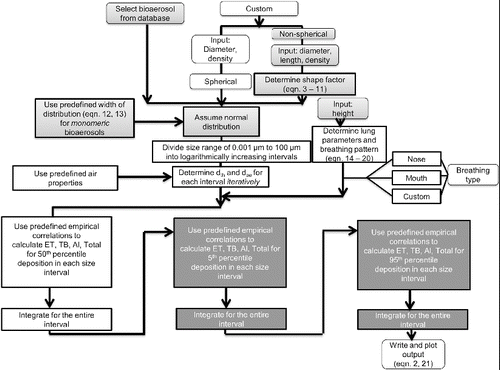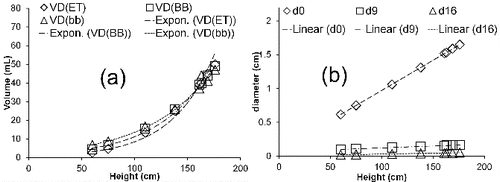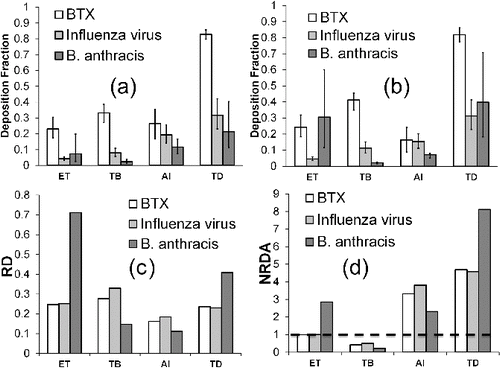Figures & data
FIG. 1. Schematic of the BAIL. ET: Extrathoracic; TB: tracheobronchial; Al: alveolar region. The boxes in light gray indicate features not in the original ICRP model added into BAIL. The boxes in darker gray indicate features that are discussed in the ICRP model but not available in LUDEP and implemented in BAIL. Users can either choose a bioaerosol from a database in BAIL (discussed in Section 3) or can input customizable bioaerosol information. The online supplementary information provides brief instructions for operating BAIL.

FIG. 2. (a) The variation of the extrathoracic volume (VD(ET)), bronchi volume (VD(BB)), and bronchiolar volume (VD(bb)) as a function of height. The fits were with R2 = 0.9875 (dashed lines),
with R2 = 0.9939 (dashed dotted), and
with R2 = 0.9948 (dotted). (B) The variation of the 0th (d0), 9th (d9), and 16th (d16) airway generations as a function of age. The fits were
with R2 = 1 (dashed lines),
with R2 = 0.9995 (dashed dotted), and
with R2 = 0.9907 (dotted).

FIG. 3. (a) Deposition of three bioaerosols in different lung compartments in a sleeping 176-cm adult nose breather. (b) Deposition of three bioaerosols in different lung compartments in a sleeping 60-cm infant nose breather. (ET: Extrathoracic = ET1 + ET2, TB: tracheobronchiole = BB + bb, Al: Alveolar, and TD: total deposition = ET1 + ET2 + BB + bb + Al). The error bars represent 5th and 95th percentile. (c) The maximum dose received by the pediatric population normalized by the maximum dose received by the adult population. (d) The maximum dose per unit surface area of the lungs received by infant population normalized by the maximum dose per unit surface area received by the adult population. The dotted line in this figure represents the scenario in which an infant dose/unit area is the same as an adult dose/unit area.

